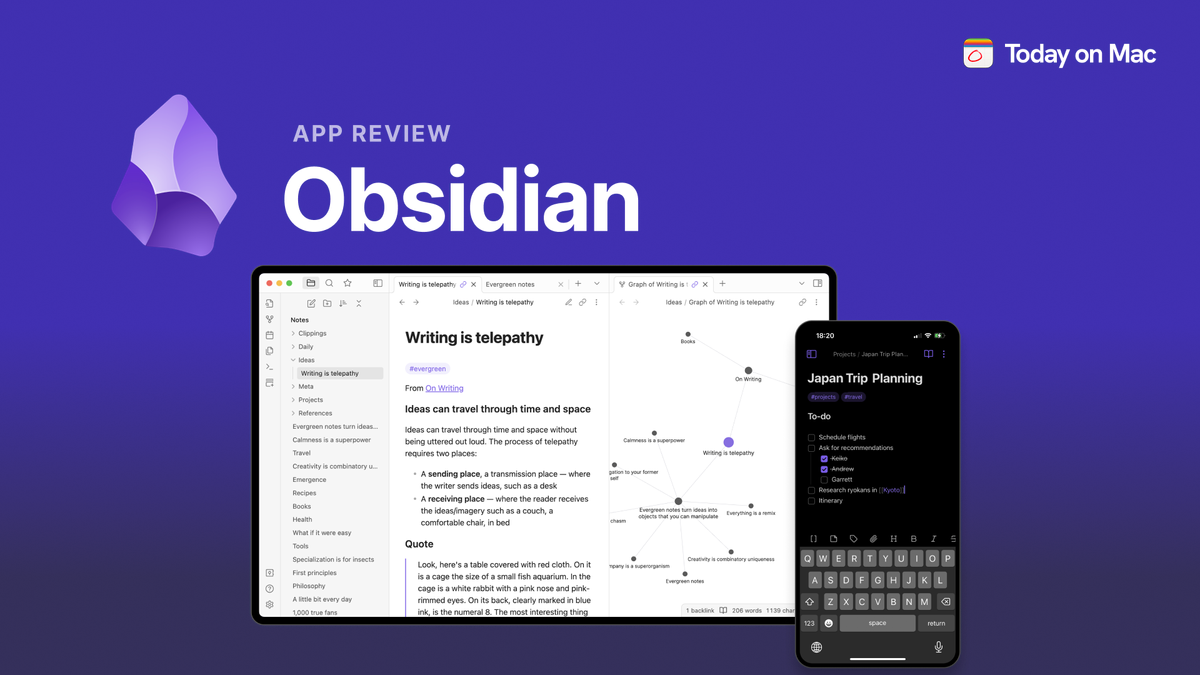The Shape of Memory to Come – Experiments on holding the unrecorded
How emerging AI tools help us reclaim the undocumented spaces between captured moments
The Shape of Memory to Come – An update
How we remember shapes who we are. In an age where our memories are increasingly externalized through digital platforms, the tools we use to capture experiences fundamentally influence our identities and understanding. The distinctions between what's documented and what's merely experienced create hierarchies that impact not only personal recollection but how we recognize patterns within ourselves and our environment.
Recently, I encountered a perfect irony that illustrates this very point: my own 2011 essay "The Shape of Memory to Come" wasn't fully archived in any of my personal digital systems. Instead, I stumbled upon a fragment of it preserved as a photograph on the Flickr (!) stream of Amber Case—a cyborg anthropologist renowned for exploring how technology transforms human behavior and identity. Thus, my essay on digital memory survived unintentionally as a digital artifact in someone else's archive, specifically someone who professionally studies the interplay between memory and technology.
I wrote that essay in 2011, when Facebook had just introduced Timeline, creating archival versions of people's lives through curated posts. The essay was triggered by a friend's frustration about a photo he assumed was safely stored online—but was irretrievably lost, along with the memory it represented. This moment felt prescient, marking a fundamental shift in our understanding of memory's reliability and permanence.
The title "The Shape of Memory to Come" intentionally echoed Refused's influential 1998 album "The Shape of Punk to Come." Just as Refused challenged musical orthodoxy by fusing hardcore punk with jazz and electronica, my essay explored how emerging digital platforms were reshaping our relationship with memory. Refused argued that anti-establishment music couldn't rely on forms already commodified by mainstream culture. Similarly, today's digital memory practices resist easy containment within commercial platforms that commodify our experiences.
This irony underscores a crucial idea: in an age dominated by automation and algorithmic curation, memory isn't merely about recalling past events—it's a matter of existential importance. Digital platforms increasingly externalize aspects of our identities, and consciously shaping how we preserve and recall experiences becomes vital. Controlling memory means controlling our narratives, which directly shapes the meanings we derive from our lives.
The distortion of digital memory
Today, digital structuring of memory is normalized. The iOS Photos app algorithmically organizes our past into neat timelines, subtly but profoundly altering our perception. Moments not documented visually become more elusive, demanding intentional effort to recall, increasingly challenging in an era of instant accessibility.
Research has demonstrated the "photo-taking impairment effect." In experiments, participants visiting mock museums were divided into groups—some observed artworks directly, while others photographed them extensively. Surprisingly, those who relied heavily on digital documentation had notably poorer recall than those who simply observed. Photographing offloaded the responsibility of remembering onto devices, making undocumented moments significantly harder to recall, almost as if they never occurred.
“Taking many photographs… seems to affect metacognitive variables at retrieval, such as confidence in memory and retrieval strategies.”
Apps like iOS Photos compound this effect by automatically curating and presenting documented memories through algorithmically organized timelines and highlights. Events not photographed fade into obscurity, requiring far greater intentional effort to retrieve. The convenience of digital documentation thus paradoxically increases the difficulty of recalling undocumented moments, reinforcing the feeling that "if it's not archived digitally, it didn't happen."
The phrase "pics or it didn't happen," popularized in early 2000s internet forums, underscores this cultural expectation for digital proof. Originally used humorously to demand photographic evidence of dubious claims, the phrase became emblematic of the skepticism toward unverifiable experiences online. However, its roots lie in predominantly male-dominated, often misogynistic online communities where photographic evidence was sometimes coercively demanded, illustrating problematic power dynamics embedded in our digital memory culture.
This implicit hierarchy—prioritizing documented moments over undocumented ones—misrepresents how memory functions. Often, undocumented moments matter precisely because we were too present and engaged to capture them. These experiences, marked by full presence, frequently carry deeper significance.
This isn’t to diminish the importance of documentation. Photos or videos of my children preserve specifics I could never hold through memory alone. But automatically valuing documented moments above others creates distortions in how we understand ourselves and our past.
Memory in the age of AI
This tension has led me to reconsider what memory means in the age of AI. I've started using Obsidian and markdown-based tools to capture memories, anecdotes, and stories with unprecedented ease and accessibility. Speech recognition and language models now allow effortless recording without worrying about structure. We simply speak, and AI helps organize and reflect on what's shared.
I've been experimenting with transforming my Obsidian vault into a personal retrieval-augmented generation system (RAG)—a searchable database of my thoughts I can query and connect with new ideas. Remarkably, Markdown, a format I've used for over a decade, is now central to modern AI systems. The same simple text format powering tools like iA Writer is foundational to sophisticated memory systems.
Most people aren’t yet aware of how accessible these tools have become. Downloading search results from Perplexity as markdown files is a built in feature, much like preserving Claude artifacts, and creating personal knowledge bases no longer require specialized skills—just curiosity and willingness to experiment. You could ask your preferred LLM to help you out with that by sharing this section of the essay with it and asking for instructions.
Pattern Recognition in personal history
This approach to memory connects deeply to pattern recognition across contexts. How we organize and retrieve personal memories parallels how we identify emerging patterns in culture, technology, and markets. By developing systems that help us make sense of our past, we strengthen the same cognitive muscles that help us interpret complex signals in our professional work.
A recent personal example made this especially clear to me. When I needed to create documentation for a medication I'm taking, my doctor simply told me to keep track of intake and effects - without providing much structure for how to do this effectively. Rather than improvising a haphazard approach or avoiding the task entirely, I developed a structured template in collaboration with Claude. I created a project in Obsidian to house this template and the resulting data.
Now, at the end of each day, I have open-ended conversations with Claude about my observations, allowing for natural reflection rather than just mechanically filling out fields. This conversational approach helps me notice subtle details and patterns I might otherwise miss. I save these conversation logs directly to my Obsidian vault, where I own and control the content completely. After a week of these captured reflections, I can analyze patterns across all seven entries and see clear trends emerging - all within my personal knowledge system rather than scattered across proprietary platforms.
What's significant here isn't just the convenience, but that I probably wouldn't have maintained this documentation if I had to sit down and write it manually each time. It's not about whether people should be willing to do the work - it's about recognizing that we can't be experts in everything, and sometimes the barrier between doing something imperfectly or not doing it at all comes down to accessibility. I'd rather have structured data that helps me recognize patterns than no data at all.
Using open source tools and owning our content - even when AI helps us capture and structure it - ensures that our memory systems serve our understanding rather than commercial algorithms. The patterns we recognize in our experiences remain ours to interpret and connect.
Automation and AI promise convenience and efficiency, yet their greatest impact may lie in quietly shaping our understanding of who we are and what we value. In this landscape, reclaiming memory means reclaiming agency over our identities. The narratives AI systems offer—curated, structured, and endlessly accessible—risk overshadowing subtler personal meanings, those uniquely shaped by the undocumented moments between photos and recordings. To preserve space for our own voice amid the automation-driven narrative is ... fundamental. Actively choosing how we document, reflect, and revisit our memories allows us to retain authorship over the meanings we create—meanings that form the core of both individual identity and shared cultural understanding. In short, the careful shaping of memory is how we affirm and maintain our human capacity to interpret, understand, and define ourselves and our worlds.
A new relationship with memory
The challenge now is twofold: critically examine hierarchies created by digital memory platforms and embrace tools giving us greater agency over our memories. Platform-mediated memory distortions can be balanced by intentional practices valuing presence alongside documentation.
My experiments with these tools continue evolving. Nothing is finalized—I’m learning as I go, exploring different methods of capturing and connecting thoughts. Surprisingly, minimal time investment is required once the right workflow is found. Previously intimidating technical aspects have become remarkably accessible.
Crucially, these tools now enable us to reclaim memories previously unrecorded or undocumented visually—those fleeting or intimate moments that cameras miss. Through speech recognition, transcription, and AI-enhanced systems, we capture experiences that once existed only between photographs, bridging gaps in our digital timelines.
I encourage experimenting with these new memory tools—not just as personal archives but as ways to deepen understanding in increasingly complex environments. These accessible tools reshape our relationship with memory, enhancing rather than diminishing our ability to comprehend ourselves and the world we navigate.
Our relationship with memory is undergoing a profound transformation. By consciously and playfully embracing it, we develop practices that expand our capacity to understand both ourselves and the futures we imagine.
Reach out, if you want to learn more.





Very interesting. As a writer interested in how media affects memory (such as memories generated by viewing old 8mm films my father took of me when I was very young) I have not heard of these tools.